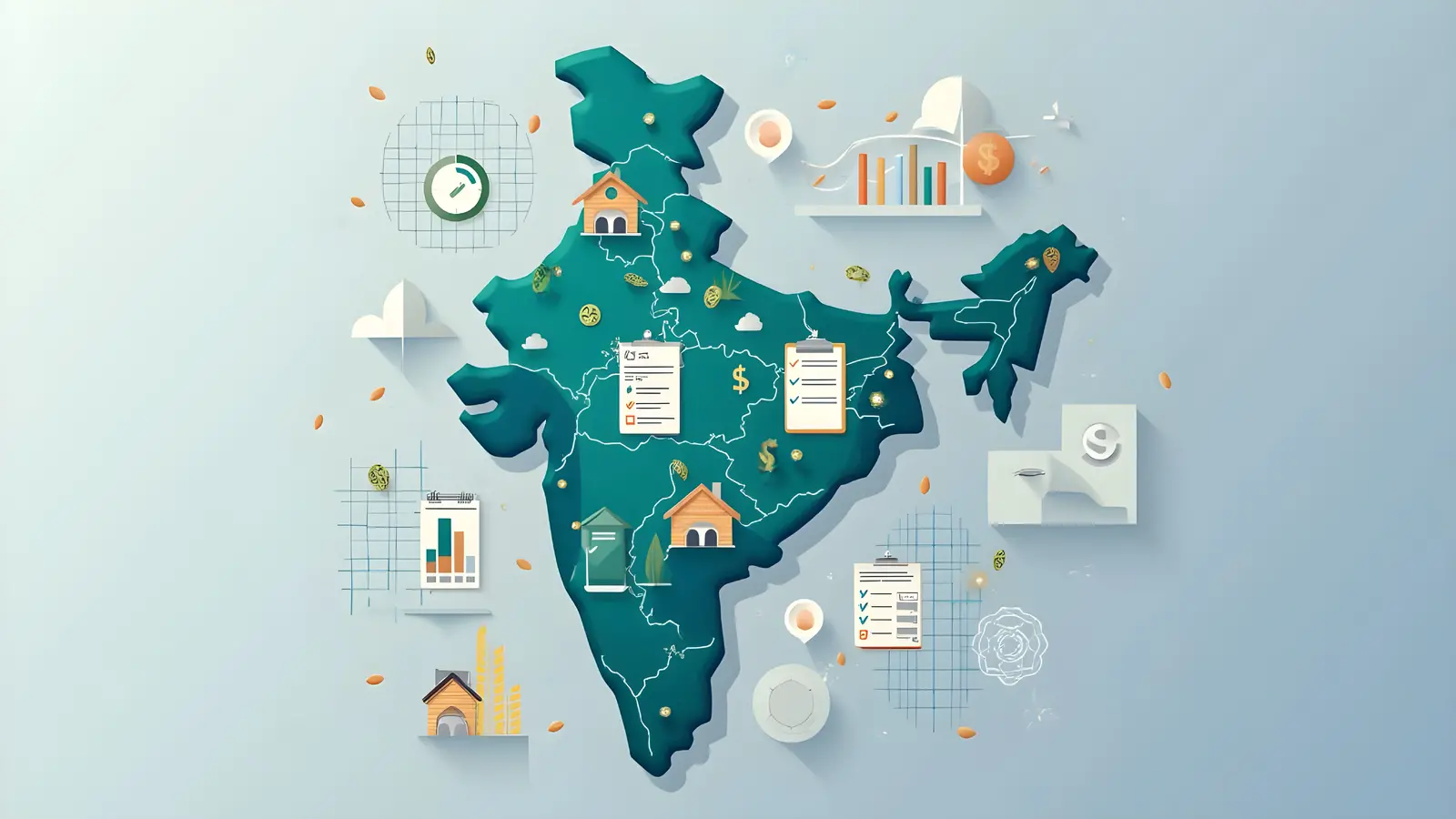The Government of India is preparing to launch two groundbreaking economic surveys starting July 2026 that will fundamentally reshape how policymakers understand household finances across the nation. These comprehensive data collection initiatives represent the most ambitious effort to capture the real financial picture of Indian households in recent history.
The Two Key Surveys: A Game-Changer for Economic Planning
1. Nationwide Household Income Survey (First-Ever)
India will conduct its inaugural nationwide Household Income Survey beginning in February 2026, marking a historic milestone in the country’s statistical framework. This comprehensive survey will collect direct data on household earnings across multiple income sources including:
- Business income from entrepreneurial activities
- Salary and wage earnings from formal employment
- Agricultural income from farming activities
- Investment returns from various financial instruments
- Informal sector earnings from unorganized employment
2. Household Consumer Expenditure Survey
Building on the successful 2023-24 Household Consumption Expenditure Survey, the government will conduct an expanded version to capture detailed spending patterns across Indian households. This survey will examine:
- Monthly and annual spending patterns
- Category-wise expenditure breakdowns
- Regional variations in consumption habits
- Impact of income levels on spending behavior
Why These Surveys Matter: Addressing Critical Data Gaps
For decades, Indian policymakers have relied on indirect methods and estimates to understand household finances. These surveys will address several critical challenges:
Enhanced Tax Policy Formation: The income survey will provide policymakers with precise data to create more equitable tax structures and identify appropriate income brackets for tax policy reforms.
Improved Subsidy Targeting: With detailed income and expenditure data, the government can better target subsidies and welfare schemes to reach those who need them most.
Evidence-Based Economic Planning: Both surveys will generate robust data for formulating economic policies, from inflation management to employment generation strategies.
Regional Development Insights: The comprehensive geographical coverage will reveal regional disparities and inform targeted development programs.
Methodology and Scope: Ensuring Comprehensive Coverage
The surveys will employ the proven National Sample Survey Office (NSSO) methodology, which has been refined over decades of data collection experience. Key features include:
- Representative sampling across urban and rural areas
- Multi-stage stratified sampling to ensure geographical balance
- Trained enumerators for accurate data collection
- Digital data capture for improved accuracy and efficiency
The Household Consumer Expenditure framework, successfully implemented in 2023-24, will be expanded to complement the income data, providing a complete picture of household financial flows.
Timeline and Implementation
February 2026: Launch of the Household Income Survey July 2026: Commencement of the expanded Household Consumer Expenditure Survey 2026-2027: Data collection phase across all states and union territories 2027: Initial findings and preliminary reports 2027-2028: Comprehensive analysis and policy recommendations
Expected Impact on Policy Making
These surveys will enable several policy improvements:
Tax Reform
With accurate income data, the government can design more progressive tax structures, potentially expanding the tax base while ensuring fairness across income groups.
Financial Inclusion
Understanding household income patterns will help design better financial products and services for underserved segments.
Inflation Management
Detailed expenditure patterns will improve the accuracy of inflation measurements and help design targeted interventions during price fluctuations.
Social Welfare Optimization
Both income and expenditure data will enhance the effectiveness of existing welfare schemes and inform the design of new programs.
Challenges and Considerations
While these surveys promise significant benefits, successful implementation will require addressing several challenges:
Privacy Concerns: Ensuring household income data remains confidential and is used only for policy purposes.
Response Rates: Encouraging participation across diverse socio-economic groups, particularly high-income households who may be reluctant to share financial information.
Data Quality: Training enumerators adequately to collect accurate information across India’s diverse linguistic and cultural landscape.
Integration with Existing Systems: Ensuring the new data complements existing statistical frameworks without creating inconsistencies.
The Road Ahead: Building a Data-Driven Economy
These surveys represent more than just data collection exercises—they signify India’s commitment to evidence-based policymaking. The comprehensive household financial data will serve as a foundation for economic planning for years to come.
The success of these initiatives could establish a new standard for economic data collection globally, particularly for developing nations seeking to understand their household economies better. As India moves toward becoming a developed economy by 2047, these surveys will provide the crucial baseline data needed to track progress and adjust policies accordingly.
For businesses, researchers, and policy analysts, the upcoming surveys offer an unprecedented opportunity to understand the Indian household economy in granular detail. The data will likely influence everything from corporate strategy to academic research on India’s economic development.
As the countdown to July 2026 begins, all stakeholders—from government agencies to individual households—have a role to play in ensuring these surveys succeed. The quality and comprehensiveness of the data collected will directly impact the effectiveness of economic policies for the next decade and beyond.
The stage is set for a transformative moment in India’s statistical and policy landscape, with these two surveys promising to illuminate the true state of household finances across the world’s most populous nation.




